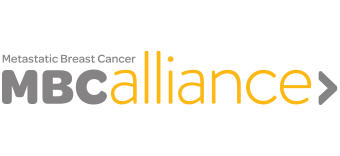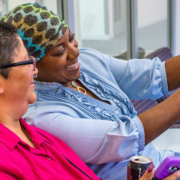Time to step it up | Sarita Jordan
African American women die of breast cancer at a higher rate, and I started to wonder if it was lack of knowledge. Most don’t want to be part of a support group. But there are incredible online forums, where people can tell you about upcoming clinical trials, who can test your tumor and where to get grant money. I have a passion to try to help those who aren’t finding their way. I want them to know that you have to navigate your own healthcare. You have to know what might come next based on the makeup of your tumor, you have to be on top of it because you want as many options as you can get. [read more=”Read more” less=”Read less”]
Ten years ago I found a lump by my nipple that was exactly the size of a pea. I wasn’t alarmed; there is no history of breast cancer in my family, it didn’t hurt, and I am very careful about my health. But I still thought I should find out what was going on, so I visited my OBGYN, who referred me to a surgeon, who sent me for an ultrasound. Afterwards the doctor said they wanted to do some biopsies, but it probably wasn’t anything to worry about.
Then the phone rang. “Oh Sarita, this is Dr. [X], just calling about your biopsy.” Pause. “Unfortunately it’s breast cancer, invasive ductal carcinoma.” I was sitting on my bed with a piece of paper so I could take notes. I wrote out what she said and then I read it. I said, “I can’t continue this conversation right now.”
That was September 25, 2005. A few days later I turned 36.
I spent the whole weekend googling. I didn’t even know what I was researching, but I wanted to understand what my doctor was talking about at our first meeting. The consensus was that I should have a lumpectomy followed by chemotherapy. The cancer was in three areas, so there was a strong likelihood that cells were in other places my body. I did four rounds of chemo every two weeks—and it was rough. Then I started tamoxifen. But I had major complications—breakthrough bleeding, almost like a hemorrhage. I never took it again.
I was in a deep depression, so I started attending conferences to learn about the disease and how to live after diagnosis. I did yoga and changed my diet and began running half marathons.
In 2012 I found a training program for community health workers. Perfect; I could work with breast cancer patients. I met with the head of the surgical oncology department at a local community hospital and became her Patient Navigator. If patients didn’t show up to have abnormal scans checked out, I would call and talk them into it. I loved, loved, loved it; it was my perfect job.
But a few months in I started to have bone pain. I thought the half marathon mileage might be too long. One day I went to exercise, and I felt like I broke my back. Then my finger swelled, I got a major headache. When I ate, it felt like my tongue didn’t fit in my mouth. But everyone said I was fine because I looked so good.
Finally, I told my nurse practitioner I had a patient with all these symptoms. She asked, “Who’s the patient?” I said, “Me.” She sent me to urgent care. My blood pressure was high and they thought I was suffering a mild stroke. They started to do tests. The CAT scan showed nothing. The blood work showed nothing. Then my boss got involved. She sent me for an MRI and had it fast tracked. The next morning she told me my cancer was back: I had a major tumor the size of a walnut between my skull and my brain, and it was in my bones, my liver, my lymphatic system. I’m blessed that I’m being treated by the best of the best; my working with head of surgical oncology saved my life.
I’ve always been in the field of helping people; now my purpose is fine-tuned. I’m back on the advocacy track, spreading awareness. People need to know they have to fight for their own survival. No one else is going to.




